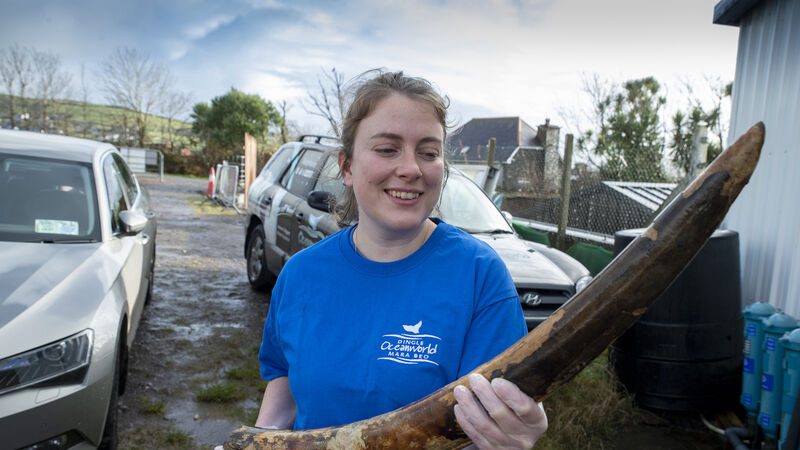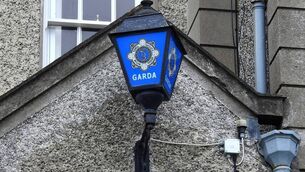Elephant tusks from 'slave ship' recovered off Dingle coast

Dingle Oceanworlds education officer Ciara O'Halloran pictured with the tusk that was dredged up from the sea bed by fishermen in Kerry
Elephant tusks have been recovered from what is believed to be a slave ship off the coast of Dingle.
The tusks were pulled in by the Cu Na Mara trawler about 120 miles west of Dingle.
“When they were trawling for prawns they picked this thing up and they were wondering what it was,” marine biologist Kevin Flannery explained.
“Initially everybody assumed they might be from a mammoth,” he said, “but they were identified as elephant."
Mr Flannery, who is one of Dingle Oceanworld Aquarium directors, then reached out to Dr Connie Kelleher, an underwater archaeologist based in Killarney.
“The weather had disturbed the ship that went down there, so we don't know exactly who the ship was but a number of these ships used to make their way up towards the UK.”

Indeed, in December 1701, another slave ship bound from Guinea to London was blown off course in a severe Atlantic storm and washed up the Seven Heads at Dunworley near Courtmacsherry.
Along with slaves, it carried ivory and hardwood from Africa.
Mr Flannery said tusks were frequently transported on slave trips, and sold on for decoration, for use in pianos or even sold for molasses, which were used to make rum.
The tusks are now with the National Museum of Ireland who will be taking a sample of the tusk.
“Then we'll know exactly from the DNA, where, what part and what elephant's tusk it was,” Mr Flannery said.












